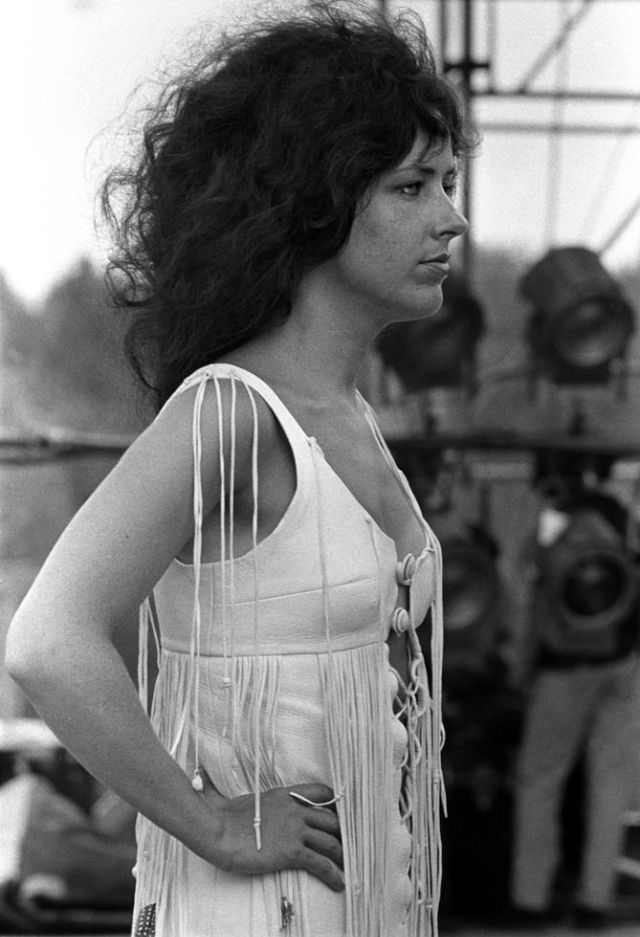Not every rock legend starts out dreaming of stardom. Some fall into it like fate — and Grace Slick was one of them. Long before she lit up stages with her electric voice and wild spirit, Grace was a college student with a passion for art and a sharp sense of independence. Born on October 30, 1939, in Evanston, Illinois, and raised in California, her early life was miles away from the chaos and color of the psychedelic music scene.
But the moment she stepped into the San Francisco soundscape in the mid-1960s, everything changed.
She formed a short-lived band called The Great Society, but it wasn’t until she joined Jefferson Airplane in 1966 that her voice found its real wings — and the world started listening.

The Psychedelic Soundtrack: Jefferson Airplane and Cultural Rebellion
When Grace Slick became Jefferson Airplane’s lead vocalist, she didn’t just bring her pipes — she brought attitude, power, and poetry. She came in hot with two songs that would become the heartbeat of a generation:
- “White Rabbit” – A haunting, hypnotic journey through Lewis Carroll’s Wonderland, laced with counterculture and drug symbolism.
- “Somebody to Love” – A raw, belting anthem of love, loss, and freedom that cut straight through the noise of the ‘60s.
Those tracks didn’t just chart. They exploded. Jefferson Airplane skyrocketed to the top, becoming a voice for the anti-establishment, youth-driven movement sweeping the country.
And right at the center of it? Grace. Fierce. Fearless. Feminine in a way that was strong, sharp, and unapologetically loud.
Video: Grace Slick: Rare Photos & Untold Life Story
Breaking Barriers: Grace Slick as a Cultural Icon
Grace Slick wasn’t just a singer — she was a symbol. In a world dominated by male rock stars, she stood her ground. She talked about drugs, politics, rebellion, and feminism — not behind closed doors, but right there on the mic.
- She was one of the first women in rock to truly own the stage.
- She called out hypocrisy, war, and injustice — all while wearing velvet, leather, and a stare that could stop time.
- She embodied freedom in its purest, messiest, and most honest form.
She wasn’t everyone’s cup of tea — and that was exactly the point.
The Evolution: Jefferson Starship and Solo Sounds

By the early ‘70s, the scene was changing. Jefferson Airplane morphed into Jefferson Starship, with a more radio-friendly vibe. Grace stuck with the band, delivering hits and powerful performances — but not without turbulence.
She struggled with alcoholism, and her wild side sometimes crossed lines. In one infamous 1978 show in Germany, she insulted the crowd while intoxicated, leading to a temporary exit from the band.
But she always came back swinging.
Her solo career showed a more experimental, introspective side. Albums like:
- Manhole (1974) — Her debut, abstract and bold.
- Dreams (1980) — Emotional, melodic, and surprisingly polished.
- Software (1984) — A dive into synth-heavy sounds of the era.
While not chart-toppers, they reflected her refusal to be boxed in.
The Pop Years: From Rock Rebel to Mainstream Star

In the mid-80s, Grace returned to the newly renamed Starship. The sound was slicker, poppier, and more MTV-ready. Think neon lights and big hair — the ‘80s were in full swing.
And with Grace in front, Starship hit big with:
- “We Built This City” – A polarizing yet iconic anthem of corporate rock.
- “Nothing’s Gonna Stop Us Now” – A sugary, romantic ballad that topped global charts.
Critics were divided, but fans were sold. Grace Slick had transformed again — this time into a mainstream powerhouse. But beneath the glitter, the heart of a rebel still beat strong.
Grace Slick’s Exit: Why She Left the Stage for Good

In 1989, Grace Slick did what few rock stars have the guts to do — she retired from music at the age of 50.
Why? Her reasoning was brutally honest: “Rock is for the young.” She didn’t want to be another aging performer clinging to a youth that had passed. Instead, she walked away on her own terms.
That decision only deepened her legend. She left before nostalgia could tarnish her flame.
Back to the Canvas: Rediscovering Her Artistic Roots
Video: THE UNTOLD TRUTH 🌟 GRACE SLICK
Retirement didn’t mean retreat. Grace went back to her first love — painting.
- Her artwork is surreal, colorful, and steeped in psychedelic flair.
- She paints portraits of icons like Jim Morrison, Jimi Hendrix, and Janis Joplin.
- Her work sells in galleries, and she’s built a second career as a respected visual artist.
It’s like her music — bold, raw, and a little wild. Every brushstroke feels like a whisper from her rock-and-roll soul.
Grace Slick Today: Quiet Life, Loud Legacy

Now in her 80s, Grace Slick lives a low-key life in California. She doesn’t perform. She doesn’t chase headlines. But every so often, she pops up in interviews, dropping wisdom and unfiltered takes on music, culture, and the state of the world.
She’s sharp, funny, and still unapologetically Grace. No filter. No fluff.
Grace Slick’s Legacy: A Legend That Lives On
Let’s get one thing straight — Grace Slick changed rock forever. Her voice was a siren in the storm. Her lyrics were poetry in a war zone. And her presence was a statement that women in music could be just as loud, just as wild, and just as revolutionary as the men.
- She paved the way for women in bands like Blondie, The Runaways, and Hole.
- She left behind anthems that still give people goosebumps.
- She proved that authenticity matters more than polish.
Conclusion: The Rebel Who Painted with Sound and Color

Grace Slick didn’t play by the rules — she rewrote them. She didn’t just sing songs — she voiced a revolution. And she didn’t fade into obscurity — she transformed.
From acid rock to acrylics, from stage dives to studio walls, her journey is as fierce as the voice that carried it. Grace Slick will always be more than a rock star. She’s a symbol of rebellion, of art, of freedom — and of the power of never being afraid to speak (or scream) your truth.


